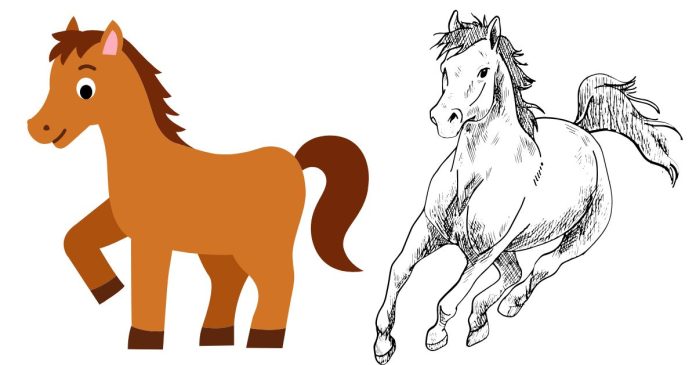Horses have specific terms used to describe them based on their age, sex, and reproductive status. At the age of two, young horses are generally referred to as yearlings or juveniles, but there are more specific terms for males and females.
Male Horses at the Age of Two
- A male horse at the age of two that has not been castrated is called a colt.
- If the male horse has been castrated, it is referred to as a gelding.
Colts are often energetic and still in the process of maturing both physically and behaviorally.
Female Horses at the Age of Two
- A female horse at the age of two is called a filly.
This term applies to any young female horse under the age of four, regardless of whether it is being trained or has started racing or other activities.
General Term: Juvenile or Two-Year-Old
For both males and females, a two-year-old horse may also be referred to as a juvenile or simply a two-year-old. This term is often used in professional equestrian contexts, such as horse racing or breeding, where the specific gender might not need to be emphasized.
Why Is Age Important in Horses?
The age of a horse is critical because it determines its level of physical and behavioral maturity:
- Training Milestones: Many horses begin formal training around two years old, though the intensity depends on the breed and intended use.
- Growth: At two years old, horses are still growing. While they may look mature, their skeletal system continues to develop until about the age of five or six.
- Racing and Competitions: In horse racing, two-year-olds are often referred to as “juveniles” and are eligible to compete in special juvenile races.
When Do They Transition to Adult Terms?
- Male horses stop being referred to as colts at the age of four and are then simply called stallions (if intact) or geldings (if castrated).
- Female horses stop being referred to as fillies at the age of four and are then called mares.
Conclusion
At the age of two, male horses are called colts or geldings (if castrated), while female horses are called fillies. This stage is crucial for their development and training, marking a transitional period between foalhood and adulthood. Understanding these terms is important for anyone involved in horse care, training, or equestrian sports!


